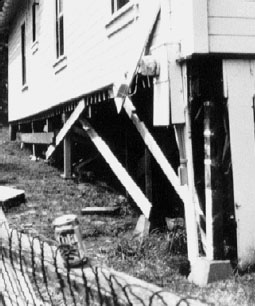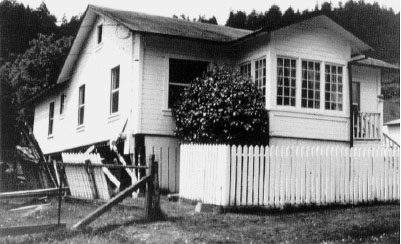The Seven Steps
Post and Pier Foundation
The Problem
The outside of the house is supported by wood posts resting on unconnected concrete piers. Siding is often nailed to the outside of the posts, making them not easily visible.
During an earthquake these posts can fail, if they are not braced against swaying.
If the posts fail, the house may shift or fall.
How to Identify

The pier-and-post foundation under this home shifted during a recent earthquake.
Source: California Seismic Safety Commission
- Go under the house to see if there is a continuous foundation under the outside walls.
- If you do not see a continuous foundation you may have an earthquake weakness.
- If you see only unconnected concrete piers and wood posts, or only wood posts, supporting the outside walls, you have an earthquake weakness.
Remember
- Horizontal or vertical wood siding is not strong enough to brace pier-and-post foundations.
- Major structural repairs, like lifting an entire house to repair the posts and putting it back, are very expensive.
The Solution
Consult a licensed architect or engineer, and a licensed building contractor who specializes in foundations, to fix this problem.
It may be possible to make the foundation safer by bracing the posts.
You might be better off to add a new foundation and plywood walls in the crawl space to make sure that the house will not shift or fall off its foundation during an earthquake.
Source: California Seismic Safety Commission
How-to Resource
- Detailed information for engineers can be found in the International Existing Building Code, published by the International Code Council.






